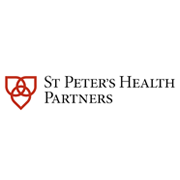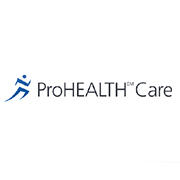Features
Digital Defenders: COVID-19 Creates a Spotlight on Digital Health Tools
Digital health tools like telemedicine, AI algorithms, and connectivity are playing an increasingly important role in helping prevent and manage disease.
-
By Michael Barbella, Managing Editor - Read original article here

Inder Singh’s tipping point arrived fully loaded on Day Eight.
Sidelined with a mysterious illness for the previous week, Singh decided that day to
take matters into his own hands, vowing to deliver the world from the “dark ages” of
infectious disease control and prevention.
“We have no idea where illness is starting or spreading,” Singh told Forbes last
spring. “I realized this at a system level...and then on a personal level when I
came down with a mysterious illness. It’s shocking when you realize how much
real-time, crowdsourced information we have about so many aspects of our lives—from
how much our neighbor’s house costs to which side street will get us home fastest.
And yet we have no idea what’s circulating around us—something that would have
helped when doctors were trying to treat me after eight days of 104 [degree] fever.
Infectious illness is the leading cause of death in young children around the
world...it’s the biggest problem in healthcare globally. The only way to stop
illness from spreading is to know where and when it’s starting.”
To find those epicenters, Singh founded a company that invented an artificial
intelligence-powered “smart” thermometer capable of real-time illness tracking. The
thermometer is equipped with an app that allows users to self-report symptoms and
can estimate flu-like maladies throughout America at any given time. The instrument
also can predict disease patterns weeks before the U.S. Centers for Disease Control
and Prevention (CDC), with equally accurate results.
Developed by San Francisco-based Kinsa Inc., the smart thermometer aggregates tens
of millions of anonymized data inputs from nearly 1 million households and uses AI
to triage illnesses based on symptom severity, duration, and communicability. Kinsa
then uses that collected data to create a real-time health map of disease outbreaks
according to zip code.
Singh’s company has distributed its thermometers to thousands of elementary school
student families to help them better track the spread of illnesses in their
communities. Pharmacies have used Kinsa’s data to determine the kinds of drugs to
stock, and healthcare providers have found the technology helpful in keeping
non-critically ill patients from seeking emergency treatment.
Ultimately, Singh hopes the data will be used by public health agencies to better
track disease. “The sad fact is, we have almost zero accurate information about
where and when disease is starting or spreading. It’s all based on models that are
pretty inaccurate,” Kinsa’s CEO said in a February 2019 Fast Company interview. “How
do you curb the next epidemic if you don’t know where and when it’s starting? You
can’t.”
It’s virtually impossible, actually, as the world is just now discovering with the
COVID-19 pandemic. The most effective mitigation efforts thus far are those rooted
in comprehensive testing: South Korea, home to the second-highest number of Asian
cases (behind China), quickly ramped up its testing efforts upon confirmation of its
first case. Within two months of its initial infection, the country had conducted
roughly 300,000 novel coronavirus assays and was performing 15,000 nasal swabs
daily.
Compare those numbers with U.S. testing output: 60,000 total and 7,000/day between
Jan. 20 (first reported case) and early March. Not surprisingly, South Korea has
flattened its infection curve and avoided the draconian lockdowns currently in place
throughout America.
“You cannot fight a fire blindfolded,” World Health Organization Director-General
Tedros Adhanom Ghebreyesus said at a March 16 news briefing in Geneva, Switzerland.
“We have a simple message for all countries—test, test, test.”
Certainly, more testing will be necessary to flatten the curve, but digital health
technologies will be equally as important in slowing transmission rates. Case in
point: A smartphone app enables South Koreans to self-report symptoms and government
officials to track quarantined citizens, while text message is the dominant delivery
tool for newly-infected patients.
Similarly, China took full advantage of the latest digital technology to bring
COVID-19 under control, using web-based tools like Weibo, Tencent, and WeChat to
disseminate accurate information about the virus, and moving half of all medical
care online to help reduce in-person clinic visits. Moreover, Chinese hospitals have
begun using AI software to detect visual signs of COVID-19-related pneumonia on lung
CT scan images.
Other countries are following suit: Israel, the United Kingdom, and the United
States are increasingly digitizing patient visits, and a newly-formed task force at
Stanford University has pledged to work with digital health firms on COVID-19
prevention efforts and treatments.
“The coronavirus, it’s such a negative aspect of our lives [in terms of the effect]
on other people,” virtual reality surgery pioneer Dr. Shafi Ahmed said in March,
“...actually, I think there is an opportunity here to rethink the whole model of the
way we see our patients, certainly around technology.”
Maybe so, but the virus is just as likely to reshape the future role of digital
health. Since the turn of the millennium, advancements in data collection and
analysis, medical connectivity, and wireless technology have been used to improve
patient outcomes. Healthcare digitization also has proven effective in assessing
disease burden, tracking outbreaks, and supporting infection control/prevention
measures, though it has never truly been tested on a massive scale.
Until now.
Digital health has become a powerful weapon in the fight against COVID-19, as it has
been harnessed for diagnostic test design, genome sequencing, and vaccination
development. The Vere-CoV detection kit from Singapore-based Veredus Laboratories,
for example, is based on portable lab-on-chip technology capable of detecting MERS
(Middle East Respiratory Syndrome), SARS (Severe Acute Respiratory Syndrome), and
COVID-19 in a single (blood) test.
Aidar Health’s assay employs cloud-based AI and machine learning to spot and measure
early COVID-19 symptoms such as fever, cough, and shortness of breath. The company’s
MouthLab device features complex firmware, a digital thermometer, and breath sensors
that gauge breathing rate, coughing patterns, and respiratory flow cycle morphology
to assess shortness of breath.
AI, however, could hold the key to defeating the virus.
Within the first month of its birth, scientists had sequenced COVID-19’s genome
(SARS took several months), and by early March, Google’s DeepMind lab had applied
its deep (machine) learning algorithms to predict the structure of proteins
associated with SARS-CoV-2, the virus that causes COVID-19 (such knowledge is
crucial in vaccination development).
AI also is tackling the mountain of literature that has been generated about the
virus to help communicable disease specialists and epidemiologists answer
“high-priority” scientific questions related to COVID-19. More than 29,000 articles
have been written about the disease, more than 13,000 of which have full text.
“This valuable new resource is the fruit of unselfish collaboration and now offers
the opportunity to find answers to important questions about COVID-19,” Dr. Dewey
Murdick, director of Data Science at Georgetown University’s Center for Security and
Emerging Technology, said in announcing the cross-team data mining effort on March
16. “Once the crisis has passed, we hope this project will inspire new ways to use
machine learning to advance scientific research.”
‘Just a Matter of When’
In many respects, the worsening COVID-19 pandemic is validating the value and
efficacy of digital health tools. Both the CDC and WHO, for example, are urging
medical facilities to expand their use of telehealth services—otherwise known as
remote or virtual care—to help triage sick patients and minimize the influx of
non-critical ailments. WHO also has set up its first Digital Health Department (its
inaugural meeting was held last fall), and the agency has partnered with WhatsApp
and Facebook on a public messaging service that potentially could reach a quarter of
the world’s population (two billion people). The service provides the latest
news/data on COVID-19 including details on symptoms and protection measures, as well
as the latest situation reports and real-time numbers. It was developed in
collaboration with Praekelt.Org using Turn machine learning technology.
Telemedicine and public messaging is just the tip of the digital health iceberg.
though. The rise of digital technologies such as AI, robotics, virtual
reality,/augmented reality, portable sensors, wearables, smartphone apps,
gamification, and remote monitoring has led to the development of innovations like
cancer-detecting smart probes and connected inhalers to atrial
fibrillation-identifying algorithms and automated population health
trackers.
“Digital health is equivalent to the term mobile health in that it utilizes web,
mobile, mathematical, and statistical technology as well as general computer
technology to listen to data and to use various algorithms that can be simple or
complex to drive care processes or disease management,” explained Dr. Mark Clements,
chief medical officer at Mountain View, Calif.-based Glooko, creator of a diabetes
management solution that provides an app for the person with diabetes, remote
patient monitoring, and healthcare provider tools for decision support and
population health management. “It’s also a tool for marrying the person with chronic
disease with interventions that themselves may not be digital. I view it as putting
more of the power of technologies in the hands of the person with diabetes to
support their self-care without having to come for a clinic visit every
time.”
Glooko’s diabetes app syncs with 95 percent of all diabetes devices. Designed for
easy data tracking, the app helps improve clinical workflow by aggregating data from
nearly any device type—blood sugar monitors, insulin pumps, continuous glucose
monitoring systems, fitness devices, and smart insulin pens.
Downloaded to a smartphone or tablet, the app shows patterns and trends in blood
sugar readings and allows persons with diabetes to create food/meal logs and set
reminders for glucose checks or medication dosing. Important information like blood
glucose levels, meals, physical activity, and medication is displayed in a logbook
screen that shows a near real-time history. Importantly, the app allows syncing
readings from multiple devices.
Clinicians can access the data in person (office visits) or remotely. They can also
create notification alerts for specific events like fluctuating blood sugar levels.
“We’re solving a cognitive burden for the person with diabetes by helping them make
sense of the voluminous data that is generated by their own body when monitoring
glucose [levels], recording their insulin doses, and recording their foods, etc.,”
Clements noted. “We have a real opportunity here to distill that down into a
narrative and a message that is easily digestible. Otherwise when you’re looking at
hundreds of data points a day, unless you are a data scientist it becomes impossible
to digest. I think one of the other problems we’re solving is the issue of getting
care more proximal to the person with a chronic disease so they are empowered to do
more to improve their health and to engage more and rely less on the healthcare
system and clinician.”
Self-empowerment and greater patient engagement are just two of digital health’s
numerous by-products. Others include new disease identification, more efficient
disease management, lower healthcare costs, and improved quality of life.
One of the more obscure benefits is the potential insights that would be gained
through the creation of vast data repositories. Through AI and data analytics,
researchers could one day definitively connect the dots between lifestyle and
chronic health conditions—associate, for instance, factors like diet, profession,
residency, and medications with specific medical conditions or illnesses.
The possibilities are truly mind-boggling: Last year, Stanford University Medicine
enrolled more than 400,000 Apple Watch users in the United States to study the
device’s irregular heart rhythm notification (the tool occasionally checks cardiac
rhythm and notifies users of irregular patterns indicative of atrial fibrillation).
As part of the study, participants with irregular heart rhythms received a
notification on their Apple watch and iPhone, a telehealth consultation with a
doctor, and an electrocardiogram (ECG) patch for additional monitoring.
Study results showed 0.5 percent of study participants received an irregular heart
rhythm notification; the pulse detection algorithm (indicating a positive tachogram
reading) had a 71 percent positive predictive value. Eighty-four percent of those
receiving the notifications were experiencing atrial fibrillation at the time, and
57 percent sought medical attention. One third (34 percent) of participants who
followed up with the ECG patch later were found to have Afib.
“The results of the Apple Heart Study highlight the potential role that innovative
digital technology can play in creating more predictive and preventive health care,”
Lloyd Minor, M.D., dean of the Stanford School of Medicine, said in announcing the
study results. “Atrial fibrillation is just the beginning, as this study opens the
door to further research into wearable technologies and how they might be used to
prevent disease before it strikes—a key goal.”
Surely, disease prevention is perhaps the holy grail of digital health, but better
disease management an important objective too. Medtronic plc and Fitbit developed an
app that enables type 2 diabetics to obtain their blood glucose levels and physical
activity data in one streamlined application. Philadelphia medtech firm RTM Vital
Signs LLC has developed a miniature implantable long-term cardiovascular monitoring
system that produces data to support medication dosing, diagnostics, and even
predictive analytics. The device was one of a half-dozen finalists that competed for
top billing in the 2019 Boston Scientific Connected Patient Challenge; its cardiac
monitoring device features a real-time implantable blood pressure sensor equipped
with a long-term monitoring system that measures the arterial blood pressure
waveform, the electrocardiogram, respiratory rate, tidal volume, hemoglobin oxygen
saturation, and sounds of the heart, lungs and upper airway. Sensor data feeds
predictive algorithms to improve diagnostics and medication dosing related to
hypertension and other cardiac issues. Relevant data is sent to a smart device and a
central monitoring station for advanced analytics by machine learning algorithms and
a clinician.
Cardiac monitoring also is the intent of software developed by Voorheesville,
N.Y.-based Lille Group. The company’s Cardiac Signals software is designed to help
cardiology offices better manage patients and their implantable cardiac devices,
improve outcomes, increase (office) productivity, and boost efficiencies. “Cardiac
Signals is a specific medical software program that helps cardiology groups in
hospitals and private practices manage cardiac patients,” said Dennis Vetrano,
Lille’s sales and business development director. “Cardiac patients with a pacemaker
or an ICD have to be monitored...the devices have to be monitored. There has been a
push to get away from a server-based system. Our software helps nurses in the
cardiology office and cardiologists themselves monitor these patients, manage any
events, and bill out for these patients. There’s been a big push in the industry to
get patients out of the hospital quicker and keep them at home, especially with
COVID-19 pandemic. These are patients that are at higher risk to have serious
complications if the virus was acquired, so keeping them home and monitoring their
cardiac device and health remotely reduces their risk significantly by not entering
a hospital or physician office.”
And that, in turn, frees up precious resources now needed to help control the
pandemic. Using telehealth services to monitor high-risk patients also could save
America’s bloated healthcare system money—as much as $46 billion by some
estimates.
Some of the ways digital technologies can save healthcare systems money is by
improving patients’ adherence to medications and reducing acute care episodes.
Medication non-compliance costs the U.S. market more than $100 billion annually, and
the global healthcare system over $270 billion each year, according to market
analyses. Higher levels of adherence are associated with lower overall healthcare
costs for numerous chronic diseases including diabetes, hypercholesterolemia, and
hypertension, as well as chronic obstructive pulmonary disease and severe asthma.
“Digital health is integrating across the life sciences industry supporting today’s
major health issues. We see digital health integrating into the pillar modalities of
the Diagnostic, Therapeutic, and Connected Health continuum,” said Anthony
Kalaijakis, strategic industry marketing manager for the Molex Phillips-Medisize
MedTech business, an electronic components and solutions provider. “The top
morbidity factors in medtech according to the World Health Organizations remain:
Cardiovascular—heart disease; Diabetes mellitus—high blood sugar; Hypertension—high
blood pressure; and COPD. These ‘lifestyle’-influenced morbidities can be
significantly improved with digital health tools. Payers and providers are united in
maximizing efficiency by utilizing the connected health continuum. Arguably, the
major disruptors are the user interface (mobile device), the evolution of the cloud
(data centers), and population health management (software/user interface). The
ability to modulate from mass population data to individual personal needs brings an
entirely new paradigm.”
Population health management is likely to dominate innovation efforts now with the
COVID-19 pandemic in full swing. New telehealth services seem to be available daily,
and a steady stream of new tools is flooding the market to help monitor the virus’
spread and facilitate better treatment. Digital solutions also are on the way from
tech giants Amazon, Facebook, and Google, which recently met with WHO officials to
define their roles in combating SARS-CoV-2.
“The current crisis certainly makes the need for digital healthcare solutions more
apparent. Digital products will be a part of the healthcare ecosystem and we believe
they will improve care. It’s just a matter of when,” said Brad Womble, chief of
staff, senior director of Strategy and M&A for Jabil Healthcare, a global
manufacturing solutions provider that delivers comprehensive design, manufacturing,
supply chain, and product management services. “The current pandemic brings the need
for more remote solutions to the forefront. Prior to March 2020, providers were
opening up in small ways to telehealth, but quarantines are making it vital to care
delivery.
Although COVID-19 is the overwhelming topic in health today, there’s still a
population with other diseases and conditions who need to consult with their care
teams.
The social distancing mandate has made remote care a reality today for many doctors
and their patients. This crisis may prove to be a tipping point in the acceptance of
remote care and digital health for those who have resisted change.”





